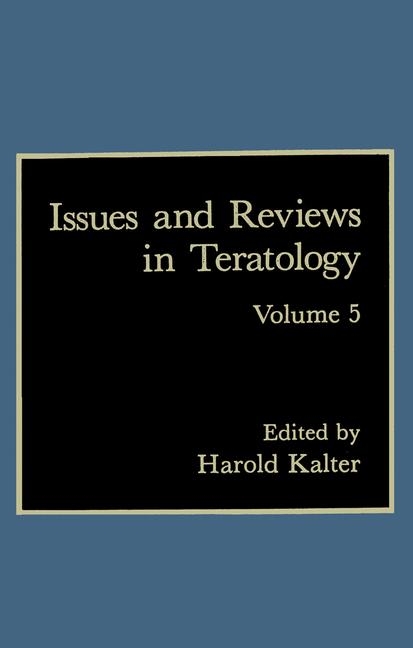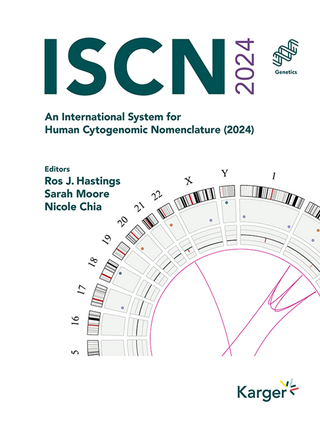
Issues and Reviews in Teratology
Kluwer Academic/Plenum Publishers (Verlag)
978-0-306-43319-1 (ISBN)
- Titel ist leider vergriffen;
keine Neuauflage - Artikel merken
1 Of Mice and Children: Reminiscences of a Teratogeneticist.- 1. Prenatal and Family History.- 2. Childhood.- 3. The Nuclear Family.- 4. School.- 5. University.- 6. Graduate School.- 7. Graduate Studies.- 8. Royal Canadian Air Force.- 9. Medical School.- 10. Getting Started—Medical Genetics.- 11. Medical Genetics Comes of Age.- 12. Genetic Counseling.- 13. The Teratology Connection.- 14. Cleft Palate and Cortisone.- 15. The Multifactorial/Threshold Model.- 16. The Human Connection.- 17. 6-Aminonicotinamide.- 18. Spin-offs.- 19. Cleft Lip.- 20. Studies in Medical Genetics.- 21. The Terato-Clinical Genetics Dilemma.- 22. The Books.- 23. Travels.- 24. International Conferences on Congenital Malformations.- 25. World Health Organization Committee.- 26. Thalidomide.- 27. Saccharin a Teratogen?.- 28. The Anomalad.- 29. Agent Orange.- 30. Sickle-Cell Screening.- 31. Newfoundland.- 32. Personal History.- References.- 2 The Concept of Homology in Comparative Mammalian Teratology.- 1. Introduction.- 2. Homology.- 3. Concept of Phenotype.- 4. Some Issues in Comparative Pathogenesis.- 4.1. Ectodermal Dysplasia in Man and Dog.- 4.2. Glycogen Storage Disease Type VII in Man and Dog.- 4.3. HPRT Deficiency in Man and Mouse.- 5. Homologous Common Congenital Malformations.- 5.1. Neural Tube Defects (NTD).- 5.2. Congenital Heart Defects.- 5.3. Cleft Lip and Palate.- 6. Searching for Homologous Congenital Defects.- 6.1. The Mammalian X Chromosome.- 6.2. Autosomally Linked Homologies.- 7. Do Names and Definitions Matter?.- 8. Some Concluding Thoughts.- References.- 3 Short-Term Methods of Assessing Developmental Toxicity Hazard: Status and Critical Evaluation.- 1. Introduction.- 2. The Drive to Develop New Methods of Detecting Developmental Hazard Potential.- 2.1. Basis of the Drive.- 2.2. Alternative Methods as a Driving Force.- 3. Goals of in Vitro and Alternative Methods in Developmental Toxicology.- 3.1. Elucidation of Normal and Abnormal Development.- 3.2. Detection of Developmental Toxicity Potential.- 3.3. Replacement of in Vivo by in Vitro Testing.- 3.4. Reduction of Expenses Associated with in Vivo Testing.- 4. Testing Chemicals of Unknown Embryotoxic Activity.- 4.1. Terminology Applied.- 4.2. Selective Embryotoxicity and Developmental Hazard.- 5. In Vitro Systems Explored for Prescreening Purposes.- 5.1. Scientific Basis for Test Design.- 5.2. Actively Explored Test Systems.- 6. Most Frequently Published in Vitro Prescreening Systems.- 6.1. Primary Cell Cultures of Phylogenetically Lower Cells.- 6.2. Culture of Mammalian Cells.- 6.3. Intact Lower Animals.- 6.4. Whole Embryo Culture (WEC) of Rodent Embryos.- 6.5. Short-Term Tests with Pregnant Laboratory Animals.- 7. Assessment of Proposed in Vitro Tests.- 7.1. Developmental Hazard Potential and A/D Ratio.- 7.2. Physicochemical Properties of Test Chemicals.- 7.3. Chemical Exposure and the Role of Metabolism.- 8. Comments on Validation.- 8.1. Selection of Chemicals.- 8.2. Endpoint Selection and Designation of Test Outcome.- 8.3. Proposed Changes in the Approach to Validation.- 9. Outlook for the Future: Genetic Toxicology versus Developmental Toxicology. Can One Glean Anything from Genetic Toxicology?.- References.- 4 Twinning in Spontaneous Abortions and Developmental Abnormalities.- 1. Introduction.- 2. Types of Twins.- 2.1. Monozygotic Twins.- 2.2. Dizygotic Twins.- 2.3. Polar Body Twinning.- 3. Spontaneous Abortions.- 4. Developmental Abnormalities.- 4.1. Conjoined Twins.- 4.2. Severe Discordant Anomalies.- 4.3. Mosaics and Chimeras.- 5. The Vanishing Twin.- 6. Incidence of Twinning.- References.- 5 Experimental Induction of Dominant Mutations in Mammals by Ionizing Radiations and Chemicals.- 1. Introduction.- 2. Gametogenesis.- 3. Review of Results Obtained for Different Endpoints.- 3.1. Skeletal Abnormalities.- 3.2. Cataracts.- 3.3. Dominant Visible Mutations.- 3.4. Litter-Size Reduction.- 3.5. Congenital Malformations.- 3.6. Stunted Growth.- 3.7. Shortened Life Span.- 3.8. Tumors.- 3.9. Effects on Behavior.- 3.10. Miscellaneous Experiments.- 4. Genetic Risk Estimation.- 4.1. Indirect Method.- 4.2. Direct Method.- 5. Special Considerations for Future Study of Induction of Dominant Mutations.- References.- 6 The Teratology and Developmental Toxicity of Cadmium.- 1. Introduction.- 2. Cadmium as a Teratogen.- 2.1. General Properties.- 2.2. Mechanisms of Teratogenesis.- 2.3. Genetic Considerations.- 3. Cadmium and the Chorioallantoic Placenta.- 4. Chronic Exposure to Cadmium during Pregnancy.- 4.1. Fetal Growth Retardation.- 4.2. Cadmium in the Placenta and Fetus.- 5. Cadmium Exposure in the Perinatal Period.- 6. Summary.- References.- 7 Epidemiologic Aspects of Down Syndrome: Sex Ratio, Incidence, and Recent Impact of Prenatal Diagnosis.- 1. Introduction.- 2. Sex Ratio in Down Syndrome.- 2.1. Historical Perspective.- 2.2. Etiologic Relevance of Sex Ratio.- 2.3. Sex Ratios in Total Live Births.- 2.4. A Critique of Available Sex Ratio Data for Trisomy 21.- 2.5. Current Live-Birth Data from Atlanta and Southwest Ohio.- 2.6. Sex Ratio in Translocation Down Syndrome.- 2.7. Effect of Maternal Age on Sex Ratio in Down Syndrome.- 2.8. Sex Ratio in Trisomy 21 Fetuses Diagnosed Prenatally.- 2.9. Summary and Conclusions for Sex Ratio in Down Syndrome.- 3. Incidence of Down Syndrome and Effects of Demographic Changes.- 3.1. Historical Perspective.- 3.2. Effects of Demographic Changes.- 3.3. Incidence Rate Projections in the United States.- 3.4. Environmental Effects on Incidence Rates.- 3.5. Effects of Elective Abortion on Incidence Rates.- 4. Effects of Prenatal Diagnosis on Incidence Rates of Down Syndrome.- 5. Concluding Remarks.- References.
| Erscheint lt. Verlag | 28.2.1990 |
|---|---|
| Zusatzinfo | 338 p. |
| Verlagsort | New York |
| Sprache | englisch |
| Gewicht | 650 g |
| Themenwelt | Medizin / Pharmazie ► Medizinische Fachgebiete ► Gynäkologie / Geburtshilfe |
| Studium ► 2. Studienabschnitt (Klinik) ► Humangenetik | |
| Naturwissenschaften ► Biologie ► Genetik / Molekularbiologie | |
| ISBN-10 | 0-306-43319-2 / 0306433192 |
| ISBN-13 | 978-0-306-43319-1 / 9780306433191 |
| Zustand | Neuware |
| Informationen gemäß Produktsicherheitsverordnung (GPSR) | |
| Haben Sie eine Frage zum Produkt? |
aus dem Bereich


